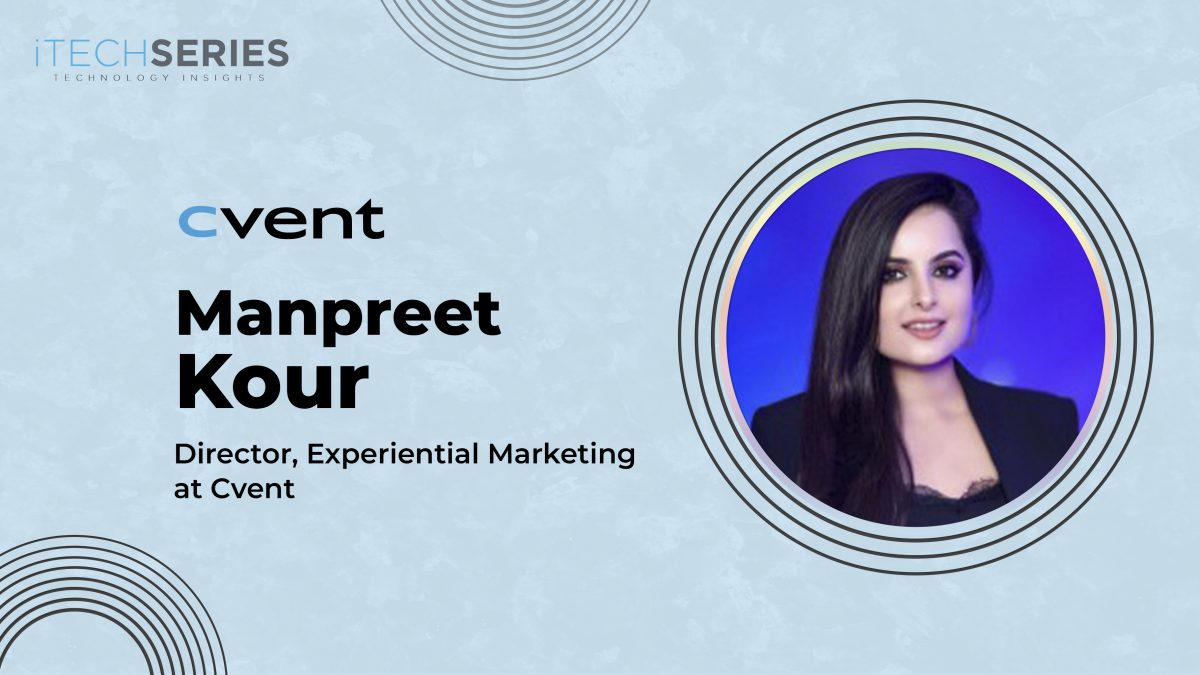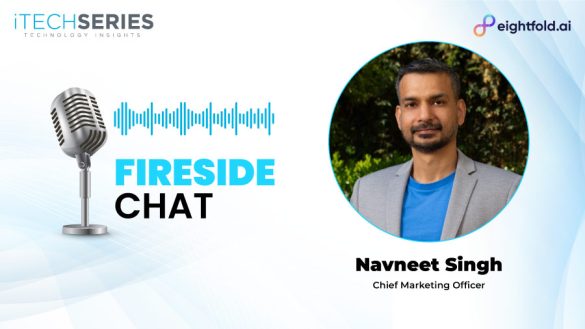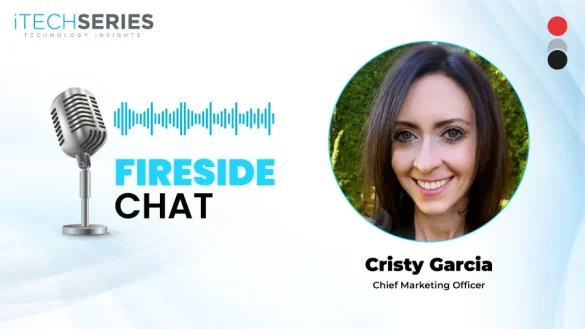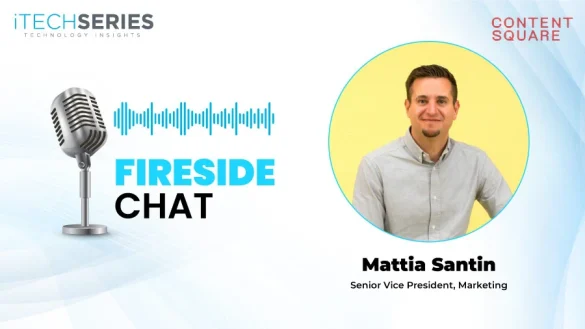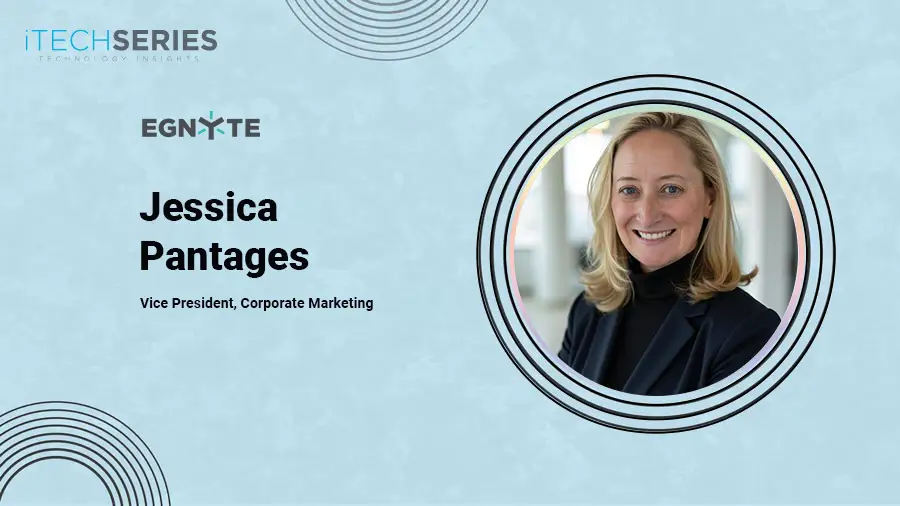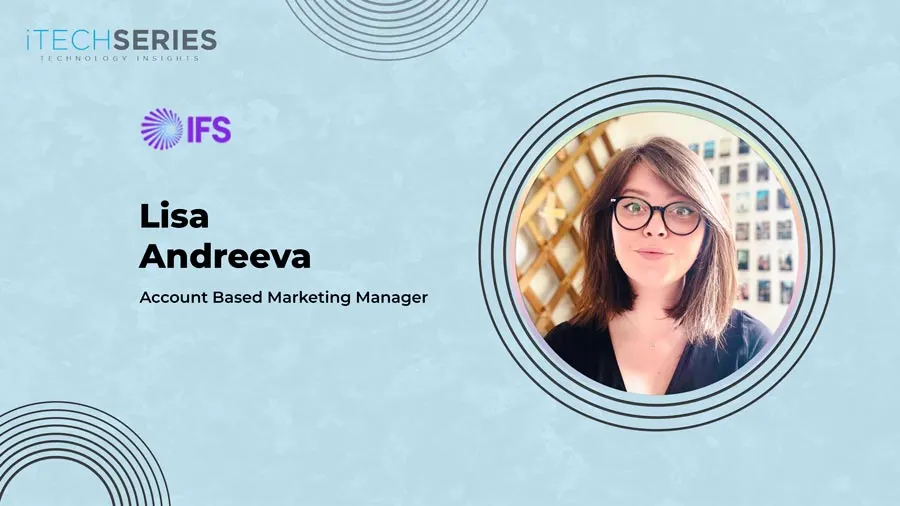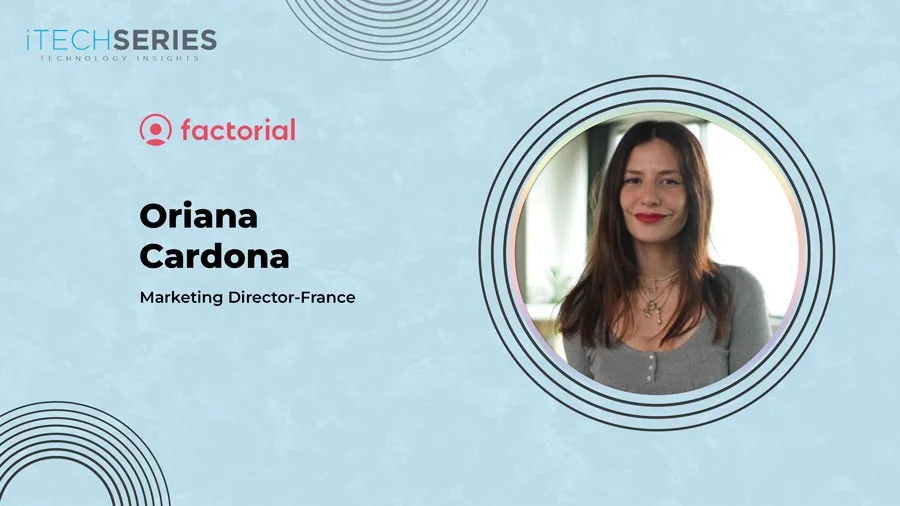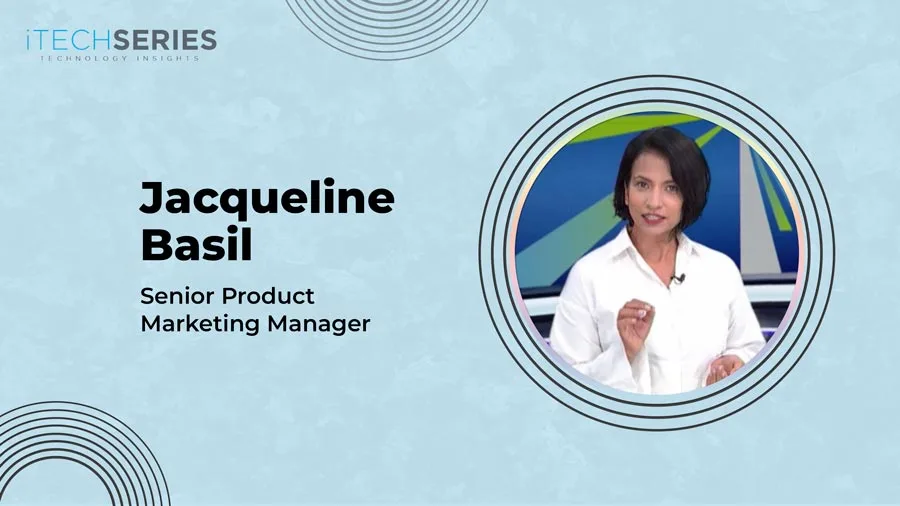Manpreet Kour, Director of Experiential Marketing at Cvent, shares how she aligns marketing with GTM objectives, leverages tech solutions, collaborates with sales and customer success, and integrates AI to drive B2B SaaS growth across EMEA and APAC.
Manpreet, it’s fantastic to have you on this interview series. What initially motivated you to pursue a career in marketing?
Thank you! I’m excited to be part of this series. My marketing journey was driven by a deep fascination with understanding human behavior and the power of storytelling. From an early age, I was drawn to how brands connect with people on an emotional level, influencing their decisions and shaping their perceptions. The ability to blend creativity with strategy to craft compelling narratives that resonate with diverse audiences was something I found incredibly inspiring. This passion, coupled with a desire to make a tangible impact, led me to pursue a career in marketing. Over time, I discovered that marketing isn’t just about selling products—it’s about creating experiences, building relationships, and driving meaningful change.
How do you prioritize and align experiential marketing efforts with Cvent’s broader go-to-market (GTM) objectives in the SaaS space?
Here’s how I prioritize and align these efforts:
- Understanding GTM Objectives: First and foremost, I ensure a deep understanding of Cvent’s GTM objectives, such as customer acquisition/demand gen, retention, brand awareness, or market expansion. By knowing what the company aims to achieve in a specific market or segment, I can design experiential marketing initiatives that directly support these goals.
- Target Audience Alignment: I focus on understanding our target audience’s needs, preferences, and pain points. By creating experiences that resonate with them—whether it’s through interactive demos, personalized events, or immersive brand experiences—we can effectively engage and convert prospects, thereby driving the GTM strategy forward.
- Integration with Sales and Product Teams: I prioritize close collaboration with Cvent’s sales and product teams to ensure that our experiential marketing efforts highlight the unique selling points of our SaaS solutions. This alignment helps create experiences that not only engage but also educate and move potential customers through the sales funnel.
- Data-Driven Decision Making: I leverage data and analytics to assess the impact of our experiential marketing initiatives on the GTM objectives. By measuring key performance indicators such as engagement levels, lead generation, and conversion rates, I can continuously optimize our efforts to ensure they are driving the desired outcomes.
- Consistency Across Channels: To maintain alignment, I ensure that the messaging and branding in our experiential marketing efforts are consistent with Cvent’s overall GTM campaigns. This consistency reinforces our value proposition and helps build a cohesive brand experience across all touchpoints.
“By creating experiences that resonate with our target audience—whether through interactive demos or personalized events—we can effectively engage and convert prospects.”
You attended the IMEX Frankfurt 2024 event this year. Could you share some of the key takeaways from that experience?
Attending IMEX Frankfurt 2024 was an enriching experience, offering several key takeaways that will influence our strategies moving forward:
- Technology Integration in Events: One of the most prominent themes was the increasing integration of advanced technology in event planning and execution. From AI-driven personalization to immersive virtual and hybrid experiences, the industry is rapidly evolving. This trend emphasizes the importance of staying ahead with innovative tech solutions to enhance attendee engagement and streamline event operations.
- Sustainability as a Priority: Sustainability was a major focus at the event, with many discussions and exhibits centered around reducing the environmental impact of events. This includes everything from eco-friendly materials to more sustainable supply chains and practices. Both clients and attendees are prioritizing sustainability, making it a crucial consideration for future events.
- Diversity, Equity, and Inclusion (DEI): DEI initiatives were highlighted as critical components of successful events. There was a strong push for more inclusive event designs that cater to diverse audiences, ensuring accessibility and representation across the board. This takeaway reinforces the need to embed DEI principles into our event strategies to create more inclusive and impactful experiences.
- Networking and Relationship Building: Despite the rise of digital solutions, the value of face-to-face networking was strongly reaffirmed at IMEX. Building relationships and fostering connections in person continues to be a vital aspect of the event industry. This insight underscores the importance of creating opportunities for meaningful interactions in both in-person and hybrid event formats.
- Data-Driven Decision Making: Leveraging data to make informed decisions was another key theme. From understanding attendee behavior to measuring event ROI, data is becoming increasingly central to event success. This takeaway highlights the importance of incorporating robust data analytics into our event planning and marketing processes.
How do you collaborate with Sales and Customer Success teams to ensure marketing efforts are aligned with customer needs and drive revenue growth?
Here’s how I approach this collaboration:
- Regular Communication and Alignment Meetings: I make it a priority to hold regular meetings with sales and customer success teams to discuss goals, challenges, and insights. These meetings help ensure that our marketing strategies are closely aligned with the realities of customer interactions and market demands. By staying in sync, we can adapt our campaigns to address current customer pain points and opportunities.
- Shared Customer Insights: I actively work with the sales and customer success teams to gather and share customer insights. This includes understanding the common objections, success stories, and feedback that these teams encounter in their day-to-day interactions. These insights are invaluable for crafting marketing messages that resonate with potential customers and for creating content that supports the sales process.
- Co-Creation of Content and Campaigns: To ensure alignment, I often involve sales and customer success teams in the creation of marketing content and campaigns. This could be through brainstorming sessions, feedback loops, or co-authoring content like case studies, webinars, or white papers. Their input helps ensure that the content is not only relevant but also effectively supports the sales and retention efforts.
- Lead Nurturing and Handoff: I collaborate closely with the sales team to develop and refine lead nurturing strategies. This includes defining clear criteria for when a lead is ready to be handed off to sales, ensuring that the transition is smooth, and equipping sales teams with all the necessary information to close the deal. Similarly, I work with customer success to ensure that post-sale marketing efforts, such as onboarding materials or loyalty programs, are aligned with customer needs and help drive long-term retention.
- Performance Metrics and Feedback Loops: I establish shared metrics and feedback loops with the sales and customer success teams to measure the effectiveness of our marketing efforts. This includes tracking metrics like lead quality, conversion rates, customer lifetime value, and customer satisfaction. By reviewing these metrics together, we can continuously refine our strategies to better meet customer needs and drive revenue growth.
- Joint Strategic Planning: Finally, I involve the sales and customer success teams in the strategic planning process for marketing campaigns. This ensures that our initiatives are designed with the end-to-end customer journey in mind, from awareness to purchase to ongoing customer success, ultimately driving revenue growth and customer satisfaction.
When it comes to experiential marketing, what are some of the key considerations specific to the EMEA and APAC markets?
Here are some of the key considerations to keep in mind:
Cultural Sensitivity and Relevance:
- EMEA: The EMEA region is highly diverse, with distinct cultural practices, languages, and consumer preferences. It’s crucial to tailor experiential marketing efforts to respect and resonate with local customs and traditions. For instance, what works in Western Europe may not be as effective in the Middle East, where cultural norms around gender, communication, and public behavior can vary significantly.
- APAC: Similarly, APAC is incredibly diverse, with varying degrees of Westernization, economic development, and cultural influences. In markets like Japan or South Korea, high-tech, innovative experiences may resonate well, whereas in India, experiential marketing might need to be more community-focused and socially engaging.
Language and Communication Styles:
- EMEA: Given the multitude of languages spoken across the EMEA region, language localization is critical. Marketing materials, event communication, and even on-site interactions need to be available in multiple languages to ensure broad accessibility and impact.
- APAC: In APAC, language is equally important, but so is understanding the subtleties of communication styles. For example, in countries like China and Japan, indirect communication and a high-context approach (where much is left unsaid and relies on shared understanding) are the norms, whereas in Australia, a more direct and informal style is preferred.
Digital and Technological Adoption:
- EMEA: The level of digital adoption varies significantly across the EMEA region. Western Europe is generally tech-savvy, with a high penetration of smartphones and social media usage, making digital and hybrid experiences highly effective. However, in parts of Africa or the Middle East, where internet access may be more limited, on-the-ground, and physical experiences might be more impactful.
- APAC: APAC markets like South Korea and Singapore are highly advanced in digital adoption, making immersive, tech-driven experiences particularly appealing. In contrast, in more rural or less developed areas, a balance between digital and traditional experiential tactics might be necessary.
Regulatory and Compliance Considerations:
- EMEA: Different countries in EMEA have varying regulations concerning public gatherings, data privacy (e.g., GDPR in Europe), and marketing practices. Ensuring compliance with local laws is essential to avoid legal issues and to build trust with the audience.
What are some key strategies you use to lead and motivate your marketing team to achieve high performance and deliver innovative results?
Set a Clear Vision and Goals:
- Establish a Shared Purpose: I make sure the team understands the broader goals of the company and how their work contributes to achieving those objectives. This shared purpose helps align everyone’s efforts and keeps the team motivated to contribute to something bigger than individual tasks.
- SMART Goals: These clear and actionable goals provide direction and a way to measure success, which helps keep the team focused and driven.
Foster a Collaborative and Inclusive Culture:
- Encourage Open Communication: I create an environment where team members feel comfortable sharing their ideas, feedback, and concerns. Regular team meetings, brainstorming sessions, and one-on-one check-ins help maintain open lines of communication.
- Leverage Diverse Perspectives: I actively encourage diversity of thought by involving team members from different backgrounds and experiences in decision-making processes. This not only fosters innovation but also makes everyone feel valued and heard.
Empower and Trust the Team:
- Delegate Responsibility: I trust my team by delegating responsibilities and giving them the autonomy to make decisions within their areas of expertise. This empowerment fosters ownership and accountability, leading to higher performance.
- Support Risk-Taking: I encourage the team to take calculated risks and experiment with new ideas. By creating a safe space for innovation, where failure is seen as a learning opportunity rather than a setback, I inspire creativity and forward-thinking solutions.
Provide Continuous Learning and Development Opportunities:
- Skill Development: I invest in the professional growth of my team by providing access to training, workshops, and industry conferences. Encouraging continuous learning helps the team stay ahead of industry trends and enhances their ability to innovate.
- Mentorship and Coaching: I offer mentorship and coaching to help team members develop their skills and advance their careers. This personalized guidance helps build confidence and competence, which translates into better performance.
Recognize and Reward Achievements:
- Celebrate Successes: I make it a point to recognize and celebrate both individual and team achievements, whether big or small. Public acknowledgment of hard work boosts morale and motivates the team to continue striving for excellence.
- Offer Incentives: I implement incentive programs that reward innovation, high performance, and collaboration. These could include bonuses, promotions, or even opportunities for career development, such as leading high-impact projects.
Encourage Work-Life Balance:
- Promote Flexibility: I recognize the importance of work-life balance in maintaining high performance. Offering flexible working hours, remote work options, and respecting personal time helps prevent burnout and keeps the team energized and focused.
- Lead by Example: I model a balanced approach to work and life, demonstrating that it’s possible to be committed to excellence while also taking care of personal well-being.
Facilitate Cross-Functional Collaboration:
- Break Down Silos: I promote collaboration not only within the marketing team but also across other departments such as sales, product, and customer success. This cross-functional approach ensures that the team’s efforts are aligned with broader business objectives and fosters a culture of innovation through diverse perspectives.
- Shared Goals and Accountability: By setting shared goals with other teams, we create a sense of unity and purpose that drives everyone towards a common objective. This collaborative spirit boosts motivation and ensures that the marketing team’s efforts are fully integrated into the company’s success.
Regular Feedback and Performance Reviews:
- Constructive Feedback: I provide regular, constructive feedback to help team members understand their strengths and areas for improvement. This ongoing dialogue helps individuals grow and enhances overall team performance.
- Performance Reviews: I conduct formal performance reviews that focus on both achievements and growth opportunities. These reviews are collaborative discussions where we set future goals and identify the support needed to achieve them.
As a marketing leader, could you describe your experience with integrating AI into your overall marketing technology stack?
Identifying Key Areas for AI Integration:
- Data Analysis and Insights: One of the first areas where we integrated AI was in data analysis. With the vast amount of data generated from various marketing channels, AI-powered analytics tools helped us process and analyze this data more efficiently. By leveraging AI, we could gain deeper insights into customer behavior, campaign performance, and market trends, enabling us to make more informed decisions.
- Personalization: AI has been instrumental in enhancing personalization efforts. AI-driven tools can help to analyze customer data and deliver personalized content, product recommendations, and targeted offers at scale. This level of personalization can significantly improve engagement and conversion rates.
Enhancing Campaign Automation and Optimization:
- Marketing Automation: Integrating AI into marketing automation platforms to streamline campaign management. AI-driven tools can help automate tasks such as email marketing, social media scheduling, and ad targeting, freeing up the team to focus on more strategic initiatives.
Improving Customer Experience with AI:
- Chatbots and Virtual Assistants: AI-driven chatbots to enhance customer support and engagement. These tools allow to provide 24/7 assistance, answer frequently asked questions, and guide customers through their journey, all while collecting valuable data that further informs our marketing efforts.
- Content Generation and Curation: AI also played a role in content creation and curation. We used AI tools to generate personalized content recommendations for our audience, as well as to create certain types of content. This not only saved time but also ensured that our content was relevant and engaging.
Future AI Initiatives:
- AI-Driven Creativity: Looking forward, I’m excited about exploring more advanced AI applications, such as AI-driven creativity for design. This could involve using AI to generate creative concepts, design layouts, or even video content, opening up new possibilities for innovation in our campaigns.
- Advanced Predictive Models: We are also keen on exploring more sophisticated predictive models that can help us anticipate market shifts and customer needs with even greater accuracy. This would enable us to be more proactive in our marketing strategies and deliver more value to our customers.
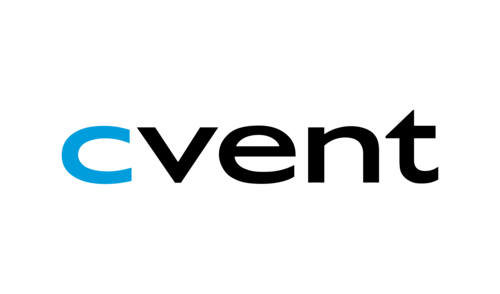
Cvent is a global meeting, event, and hospitality technology leader, offering innovative SaaS solutions that transform the event industry. Cvent’s platform supports in-person, virtual, and hybrid events, providing online registration, venue selection, event management, and attendee engagement tools. Serving over 21,000 customers worldwide, Cvent is renowned for its innovative approach, helping clients seamlessly manage and enhance their events through cutting-edge technology.
As the Director of Marketing at Cvent, Manpreet drives experiential marketing strategies for B2B SaaS solutions in the EMEA and APAC regions. With over 15 years of experience in demand generation, corporate marketing, and brand strategy, she has significantly accelerated SaaS growth in these regions. Manpreet is renowned for delivering value through innovative, data-driven solutions.

